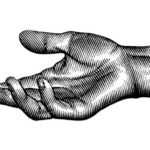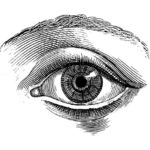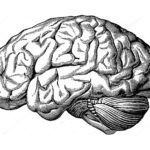Let’s dig into all the key areas that designers train on a daily basis that makes them ready to perform at top-tier performance athletes.
Muscle Power

The hands – this is a no brainer. When a designer creates something, this usually involves making something. A prototype or sketch is needed to make your ideas real and communicate this to other individuals. Through iteration, getting things down on paper, the design changes over time, but all the while you strengthen your hands by doing. By creating things visually, you start thinking visually, which helps expand your creative capacity. You are using a specific part of your brain to enhance your problem-solving process which is also a muscle. This radically increases your creative problem-solving capacity.

The eyes: seeing muscles – One muscle that is connected to the visualization muscle is the seeing muscle. Our brains filter out a lot of information about the world around us. That is a good thing because, without those filters, we would go crazy from the information overload. The downside of those filters is that we miss a lot of information. Creative problem solving is about seeing the solutions that other people have missed, seeing that crucial piece of information others don’t. Apart from their visualization muscles, designers have strong seeing muscles. They see the world differently, they see things other people miss. These things are in the visual-design realm: signs, forms, colors. But also in the functional domain: interactions, flows, information. Typically designers look at the world and see what’s wrong and they typically think about how to fix those wrongs all the time. Seeing, getting past the filters, is something you have to train. If you spend your time making things, you are also training yourself in seeing.

The brain: connecting muscles – This brings us to the next muscle: the brain. The brain works on the basis of connections. Every time you learn something new, new connections are built. Designers spent their time coming up with new things. To design something is to create something that wasn’t there before, to create a new reality. This activity has its impact on the connections in your brain. Constantly feeding your brain with inspiration and constantly trying to come up with new, creative ideas, trains the brain, creates more and different connections. These patterns and connections in the designer’s brain helps him to create faster, to become more and more creative as he gets more experiences. His brain is trained for creativity, for new connections.
The connection to the sub-conscious
These are all things you can train in your conscious brain. And if you train them every day for years, you will get better. But that is not where designers get their superpower when it comes to creativity. The biggest secret to creativity lies in the subconscious brain. The subconscious brain is the most powerful part of your brain. Bursts of inspiration, lightning flashes of insight, creative genius, all come from the subconscious brain. The problem is access. You cannot control the subconscious brain directly. What you can do is become better friends with your subconscious brain. If you start listening to it more, give it interesting things to work on, you can start to build a better connection. The subconscious brain speaks in a different language that you’ll have to master. The subconscious brain speaks a more emotional language, a language of feeling. Every time you have the feeling something is not right or you should try something else, it’s your subconscious brain talking to you. The eyes are also a good way to talk to your subconscious brain. Visual thinking is also something the subconscious brain likes. Designers are better at visual thinking and emotional thinking so they typically have a better connection to their subconscious brain. They speak the same language.
Designers trained using the emotions in their work and how to think with their eyes. I think practicing design is an excellent gateway to intuition.
